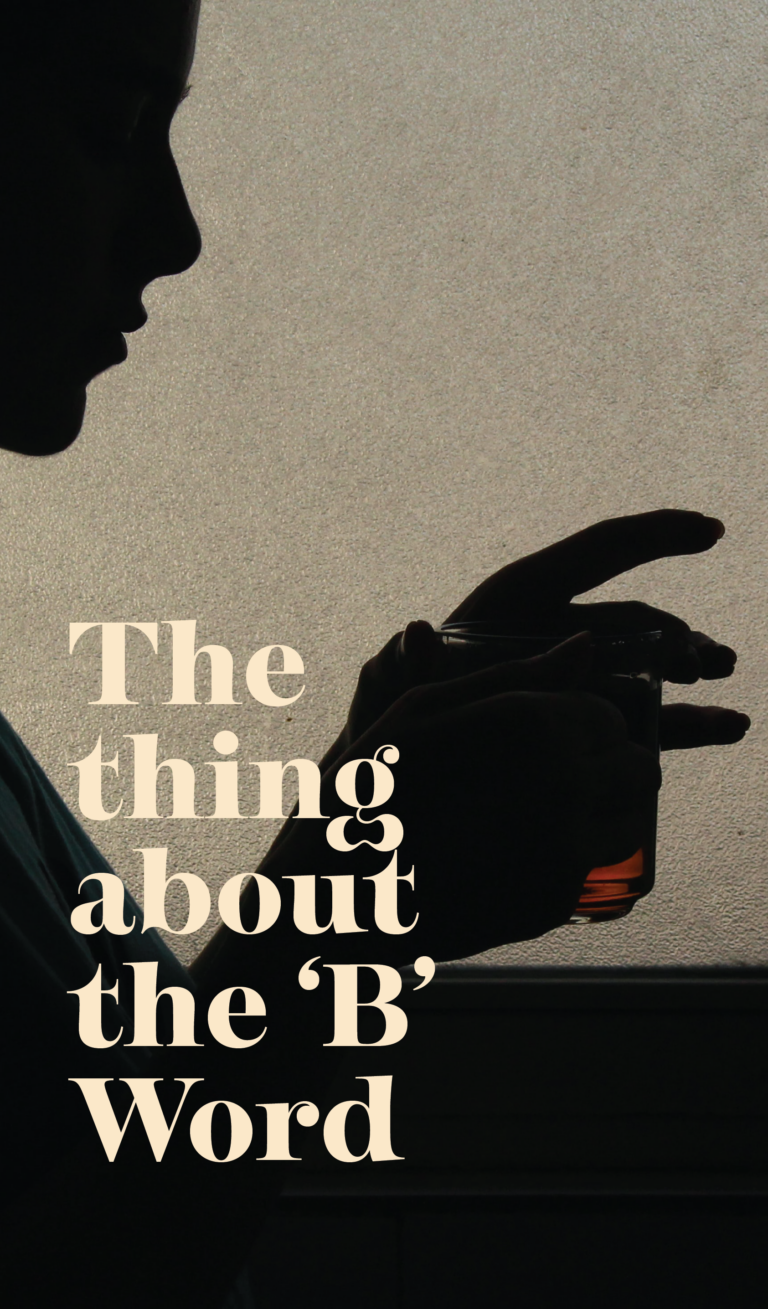The Thing About the ‘B’ Word

Brand, branding, brand guidelines. You’ll fall down a rabbit hole if you Google any of these things and we’re mighty sick of answering the question “what brand stuff do I need?” You see we realized, after six years of working with leaders and organizations across the country, that the word brand is a thing. Your company, your organization, your project, they are or are a part of a brand. What you and your team members have, move within, grow from, and focus on progressing, is an identity. And while we can easily make you some pretty cool stuff to help keep peoples’ recognition and excitement of your work, it doesn’t mean a whole hell of a lot if who you are, why you do what you do, and the way you connect with the world around you doesn’t match what you’re doing, selling, or promoting.
For years the internet has discussed how the narrative and concept driven b-word is assumed to be an all inclusive entity; however, rarely does it capture and specify the habits (guidelines) necessary to keep the narrative growing; you know, like a person. With ‘brand’, there has always been this bizarre disconnect between the story being told and the actuality of the lives living this narrative.
I believe what people look for in a brand is what they are looking for in themselves. People want something that will a. what will help them seem the way they’d like to be, or b. because it brings them genuine enjoyment. All of this is done through an emotional lens (like all decision making) and what better to appeal to the emotions than a story? A narrative that places the user in the center to make them feel like they’re a part of something.
The Reader’s Digest version is that these kinds of thoughts, some decades ago, sprouted “the brand”: designers grasping onto the tangible and visual pieces that individuals could consume, ogle over, and enjoy; writers crafting narratives to connect idea to thought to reality; and operations managers developing outlines for processes to make sure things happen between point a and point b. All these parts put their pieces together to make the company, and everyone carries on following the guidelines until one day someone realizes that none of it matches up. Then you get suckered into a rebrand to support the cohesion of the logo and the story, but the operations are separate because there is very little the internal and external structures have in common. Things keep running as they do until someone in the company once again wonders why things are happening the way they are internally, when externally the narrative is completely different. And so the cycle starts again (maybe this time you’ll start a second company to further drive home the point you aren’t making.)
But you know all of this.
So what the hell do we do when it comes to establishing a brand, a story, a narrative, a connection between your concepts, consumers and the teams you care for? First, check out the idea of “de-siloing.” If you’ve got less than 25 people on your staff, I promise, it’s not as bad as it sounds. Whether you’re kicking off or doing a refresh, bringing everyone into the same room (not always literally, by the way – there are steps, the goal is not to have mass chaos) to create a unified culture book that creates parallels between the narrative you engage in with your clients matches the communication you have on a daily basis with your internal team is vital. Why? Because you’re creating an identity, not just having everyone vote on the best new logo Larry can whip up on PowerPoint.
This brings me to the next step, understanding you have an identity. One of our many fine dictionaries defines identity as a noun – the fact of being, to be exact. Defining your identity is an opportunity to determine the type of work you will create, the people you will support, and how your day-to-day will feel. It’s the messy mix where your business plan, operations strategy, marketing plan, and brand guidelines all come together to make sure they’re saying the same thing. This does a couple of things:
A. Transparency becomes an unspoken value that your customers can trust. When making a decision based on emotions, trust is a leading factor in purchasing literally anything. They either trust you will have the best price, trust you aren’t putting toxic materials in their things, or just trust that you’ll listen when they have a problem they want to voice.
B. Transparency, like an identity, showcases a very important part of your work: the humans behind it. This human to human connection further expands your narrative. Whether your internal team is dedicated to celebrating their clients by only showcasing their customers on digital media to sending individually signed hand-written thank you cards, or your clients engage in your work purely because of the influential and inspiring individuals you’ve hired – people to communities are what change a singular brand entity into an interminable identity.
So what is this good for?
Let’s come back to the idea of people looking at brands to fulfill something they don’t have. People are moved to action through narratives they see being lived out loud.
This idea of an identity goes on to further support individuals (leaders, influencers, to people just trying to “establish their brand”) who are the products behind their services. Individuals are not perfectly polished products that consumers can demand consistency and perfection from – people are humans. They are real, and changing, and not always going to do the right thing. With this in mind, having the reality that you have an identity that is continuously growing infers change, a constant working towards, and an acceptation of the imperfect, all vital to being human.
An Identity creates empathy – connecting individuals to the feeling of an individual (organization) encourages consumers to step into your world and engage in a way they may not with a brand dedicated to pushing product. It is the beginning of creating a lifestyle for your clients, making your work something others can’t live without.




